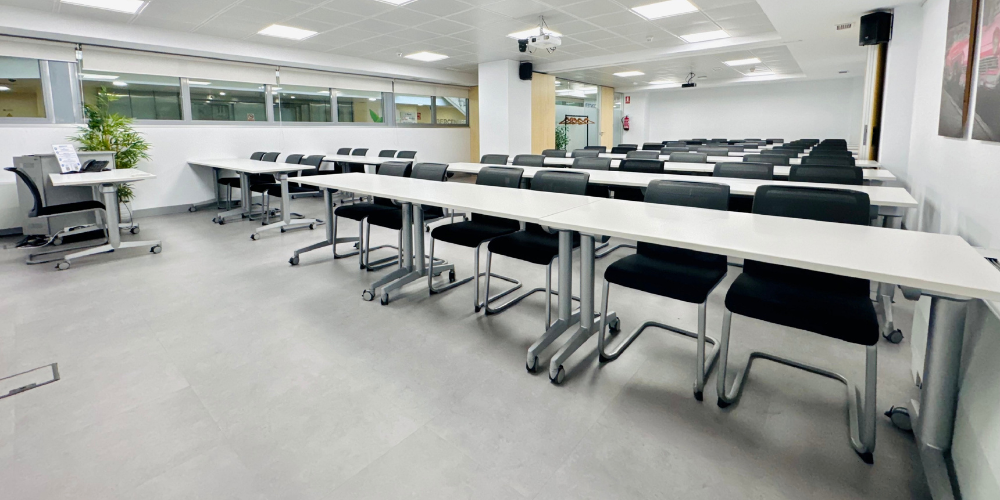What are organisational structures?
Organisational structures are those structures of the hierarchical system within an organisation that help to concretise functions or tasks of the members of a company, establishing also a relationship between them.
They are closely related to corporate culture and leadership style. It should be pointed out that there is no one organisational structure that is better than another; each one is different and adapts to the objectives of the company, the type of sector, etc…

Characteristics of organisational structures
The first thing to be clear about when determining the characteristics of organisational structures is that they should have a representative base that is constantly evolving, coordinated and with standardised protocols. In addition to this, they should be departmentally specialised and follow a common strategy.
This structure can be centralised or decentralised, depending on the top management and departmental teams that have to take the main decisions.
The company’s environment, tools and resources, which may influence the organisational model, must also be considered. Finally, these structures will also depend on the organisation’s vision, mission and values.
Key elements of organisational structure
In any organisational structure there are some fundamental components.
Chain of command
This consists in a line of authority that flows from the highest management down to the lowest positions. In this chain it is defined who is to be addressed according to the issue to be dealt with.
In this aspect it is interesting to have a platform where there is a chain of command, and which helps to improve internal communications. There is software that help to make company organisation charts that manage the workload and the tasks that are supervised.
The structure of the chain of command is characterised by:
- Strategic apex.
- Middle line.
- Operational core.
- Technostructure.
- Support staff.
Level of centralisation
Whether the organisation is centralised or decentralised will influence the speed of decision-making. This will also have an impact on the impact on a democratic perception of the way in which action is taken.
Margin of control
This element is influenced by the size of the company and the level of centralisation. The more employees the management controls, the greater the span of control.
Degree of specialisation
Tasks are distributed at different levels, so employees with a high degree of specialisation will be the most expert in the field and the most productive.
When the degree of specialisation is lower, the workforce is more flexible and versatile. The ideal in all this is to find the most suitable option for the company’s activity, where there is a balance.
Structural formality
The degree of formality of the structure influences the organisation, it is interesting to have a compromise between rigidity and freedom, where it is possible to work with fast processes without having to eliminate relationships between workers.
Formation of departments
The activities of an organisation are divided into departments, so when creating the model, it is necessary to analyse the need for rigid or flexible departmentalisation.
Rigid structures achieve a higher level of specialisation while flexible structures encourage collaboration between departments.
Types of organisational structures
We can find different types of organisational structures depending on the number of members, the nature of the service, the management model…
Functional organisational structure
The aim of this structure is to cover the needs of the different hierarchical levels. Here, specialisation and target-oriented work are of great importance. This does not mean that the members of the team do not receive orders from the bosses or managers.
The specialisation of each worker must be strengthened, developing their qualities and skills, also achieving, to a certain extent, greater motivation, improving direct and agile communication.
Hierarchical organisational structure
It is used in large companies, creating small units where they are supervised by one or more superiors.
It is very beneficial for those units that lack command, but care must be taken not to use excessive authority. It is also known as a pyramidal structure, where the decision-making power of each worker is at a maximum.
Linear organisational structure
In this structure we see how direct authority relationships are combined with the advice given by external agents of the company.
The advisors meet the needs that the company cannot cover by itself, where authority is never undermined, and activities must be optimised in terms of time and resources.
Some care must be taken because it can become inflexible and rigid, as in dynamic environments they can be more productive within a company.
Matrix organisational structure
Here we can see how resources and materials are grouped for specific tasks and projects.
The members of the group may or may not belong to the organisation, having two leaders, the general leader and another who acts as the person responsible for the specific task. Within this structure we can find two types of distribution:
- Vertical distribution: each department is dedicated to one function.
- Horizontal distribution: a project is integrated with workers from different departments.
Organisational structure by division
This company is organised around three key elements: product lines, customer types and geographic area.
- Product structure: this is divided into groups, each of which is responsible for a specific product.
- Geographical area structure: these are companies divided by large organisational chains. Managers oversee each area.
- Structure by clients: it adapts to the needs of solving needs according to the clients, having a greater specialisation to solve problems.
Some examples of organisational structures
In order to explain the organisational structures that we have seen throughout this article, we will look at some cases of real companies:
Amazon
The company Amazon divides its staff into 12 levels of organisational structure. Here Jeff Bezos has the highest level, and the rest of the positions start from level 1, that of the delivery and packaging workers.
Different badges are given with different colours depending on the seniority of the employee. They all start with blue and every five years progress to yellow, red, purple and silver.
Google is organised around Alphabet Inc, a company created in 2015 that brings together all its businesses into a company structure based on conglomerates of subsidiaries.
Google is just one of 26 subsidiaries, where the CEO is shared.
In 2017 this company broke up into 8 product divisions that competed for the same resources. Right now, it has half and is looking for more freedom for creative engineers.
Microsoft
In 2017 this company split into 8 product divisions competing for the same resources. Right now, it has half and is looking for more freedom for creative engineers.
Ibercenter | Oficina Virtual en Madrid



